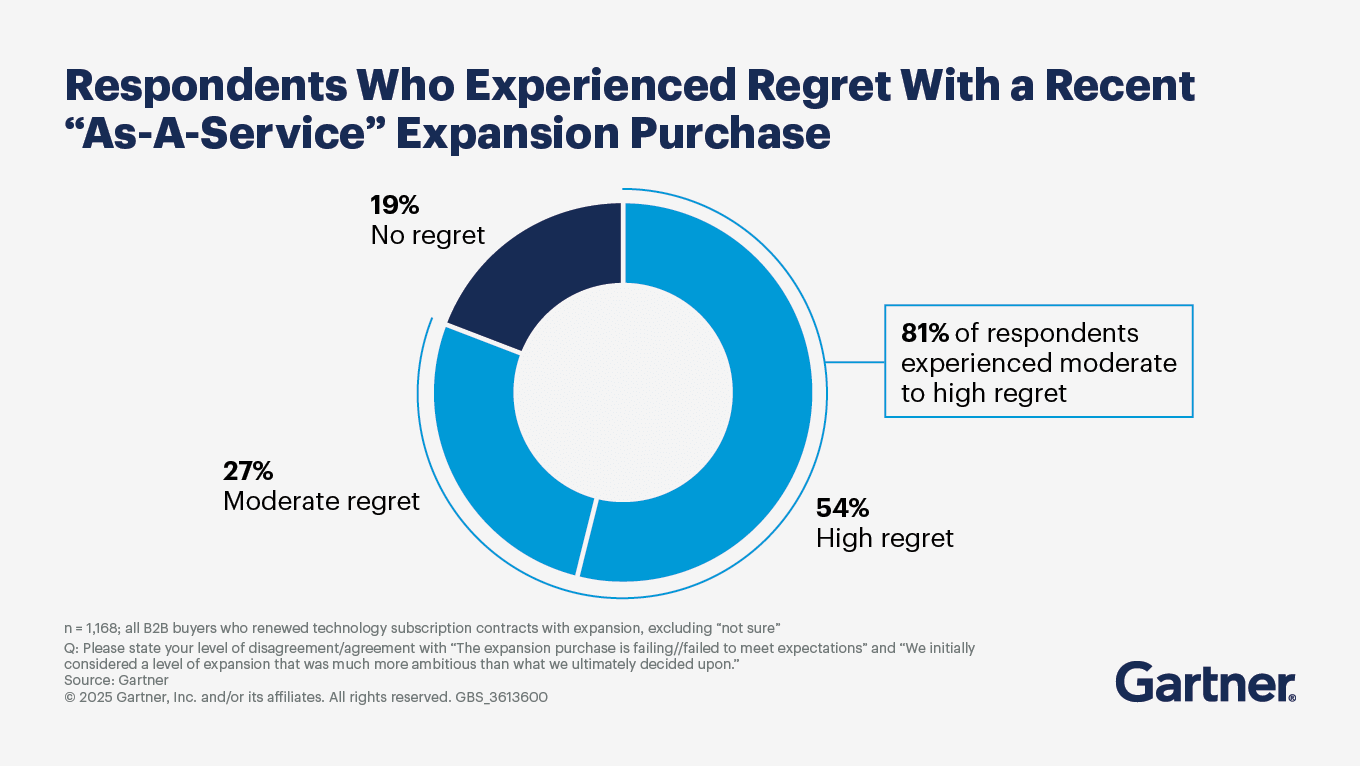Don’t lose sight of business objectives, especially under the influence of vendor demos.
- Gartner client? Log in for personalized search results.
For effective customer service technology deployment, lead with business needs
While the value of technology built to manage customer service and support interactions is undeniable, customer service and support leaders often experience systemic and cultural disconnects that hinder their ability to make informed technology decisions. Combined with the allure of vendor-led sales presentations, it’s all too easy to lose sight of what matters most: how the technology contributes to business objectives.
If you lead with the technology rather than business requirements, you may narrow the scope of effort and, as a result, reduce the potential value of your investment. In contrast, the most successful technology projects are driven by a clear and compelling need for change within the business.
Best practices for customer service technology investments
Before purchasing customer service technology, consider the following recommendations to avoid the pitfalls that often lead to regret.
Prioritize business requirements upfront
More than 80% of technology buyers experienced moderate to high regret with their recent “as-a-service” expansion purchase decisions. This frequently results from vendors pushing a technology-led sales process that highlights their unique value proposition instead of starting with the buyer’s needs. Take control of the narrative to keep the focus on what matters to your organization.
Hold vendors accountable by requesting use cases during demos
Use cases, which describe how a capability or service can meet a customer’s needs, are numerous and should be tailored to issues in your customer service organization. Document priority customer service technology use cases to guide what vendors present in demos.
Customer journey maps for service and support can help pinpoint interactions with the highest priority and value to focus on when providing functional requirements for vendors to build their demonstrations around.
Ensure collaboration across business functions
Customer service and support leaders are responsible for building a cross-functional team that spans the entire customer journey and not just the interactions themselves. To link the highest-value, new-and-improved customer journey use cases to the quantifiable value they deliver, and minimize regret, collaborate to ensure that the scope is understood and horizontally aligned.
Customer service technology FAQs
What is customer service technology?
Customer service technology helps manage customer support interactions. A shift to cloud-based technologies offers opportunities for customer service teams. However, sourcing the highest-value technologies requires starting with a clear and compelling need for change. The key goals of the latest customer service technology trends are to migrate volume from assisted service to self-service and to enable assisting reps to be more effective.
How do you align customer service technology with business needs?
To prevent postpurchase regret when buying customer service technology, start with business requirements and use cases, and hold vendors accountable for doing the same in their demos and sales process. Work with a cross-functional team to document the full customer journey. This helps pinpoint the highest-value functionalities that customer service technology must support.
Attend a Conference
Join Gartner experts and your peers to accelerate growth
Gather alongside fellow leaders to gain insight on emerging trends, receive one-on-one guidance from Gartner experts and create a strategy to tackle your priorities head-on.
Gartner Customer Service & Support Conference
Denver, CO

Drive stronger performance on your mission-critical priorities.
